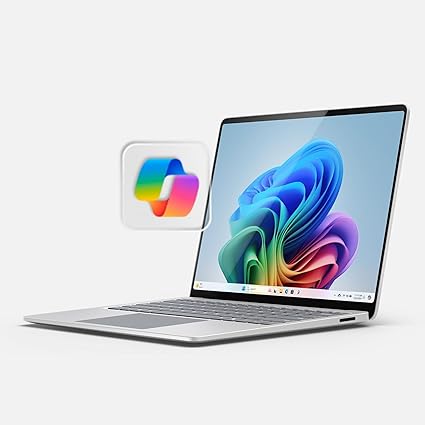Introduction
Microsoft is introducing new generative AI models
Microsoft has recently made waves in the AI community with its Microsoft announcement of Phi-3 fine-tuning, new generative AI models, and a suite of Azure AI updates. These advancements are poised to revolutionize how organizations customize and scale their AI applications, making AI more accessible and powerful than ever before. Let’s dive into the specifics and see what these updates mean for businesses and developers.

Phi-3 Fine-Tuning
What is Phi-3 Fine-Tuning?
Phi-3 fine-tuning is Microsoft’s latest innovation in AI model customization. This technique allows organizations to adapt pre-trained models to their specific needs with minimal data and effort.
Benefits of Phi-3 Fine-Tuning
Phi-3 fine-tuning offers several advantages:
-
Reduced Training Time: Significantly cuts down the time required to train AI models.
-
Cost Efficiency: Lower computational costs compared to training models from scratch.
-
Higher Accuracy: Tailors models to specific tasks, improving accuracy and performance.
How Phi-3 Fine-Tuning Works
Phi-3 fine-tuning leverages a pre-trained model and refines it using a smaller, task-specific dataset. This process involves three main steps:
Step 1: Pre-Training
The model undergoes extensive training on a large and diverse dataset to acquire general knowledge.
Step 2: Task-Specific Data
A smaller dataset, relevant to the specific task, is introduced to fine-tune the model.
Step 3: Optimization
The model is optimized for the specific task, enhancing its performance and accuracy.
New Generative AI Models
Introduction to Generative AI
Generative AI models are designed to create new content, from text to images, music, and more. Microsoft’s new generative AI models promise to push the boundaries of creativity and automation.
Types of Generative AI Models
Microsoft has introduced several new models, including:
- Text Generation Models: For creating human-like text based on given prompts.
- Image Generation Models: Capable of creating realistic images from textual descriptions.
- Music Generation Models: Composing music that matches a specified style or mood.
Applications of Generative AI Models
Content Creation
Generative AI models can be used to create articles, blog posts, and other written content, reducing the workload for human writers.
Design and Art
Artists and designers can leverage these models to generate new concepts and designs, enhancing their creative process.
Personalized Marketing
Businesses can use generative AI to create personalized marketing materials tailored to individual customers.
Azure AI Updates
Overview of Azure AI
Azure AI is a suite of AI services and tools offered by Microsoft to help businesses build and deploy AI applications. The latest updates bring significant improvements in usability, performance, and scalability.
Enhanced Tools and Services
Microsoft has enhanced several tools and services within Azure AI, including:
- Azure Machine Learning: Simplified model training and deployment.
- Cognitive Services: Improved natural language processing and computer vision capabilities.
- Bot Service: Advanced conversational AI for building chatbots.
New Features in Azure AI
AutoML Enhancements
AutoML now includes more robust automation features, making it easier for users to build high-quality models without deep AI expertise.
Responsible AI Tools
New tools have been introduced to help organizations build AI systems that are ethical and fair, addressing biases and ensuring transparency.
Scalable AI Infrastructure
Azure AI now offers more scalable infrastructure options, allowing businesses to handle larger datasets and more complex models.
Empowering Organizations
Customization and Flexibility
The new AI updates empower organizations to customize AI models to their specific needs. This flexibility ensures that businesses can tailor AI solutions to their unique challenges and goals.
Industry-Specific Solutions
Industries such as healthcare, finance, and retail can benefit from customized AI models that address sector-specific problems and requirements.
Scaling AI Applications
With enhanced scalability features, organizations can now scale their AI applications more efficiently. This includes handling increased data volumes and more complex computations.
Cloud Integration
Azure AI’s seamless integration with Microsoft’s cloud infrastructure ensures that businesses can scale their AI operations without worrying about hardware limitations.
Case Studies
Healthcare
In healthcare, Phi-3 fine-tuning and generative AI models are being used to improve diagnostics, personalize patient care, and streamline administrative tasks.
Personalized Treatment Plans
AI models can analyze patient data to create personalized treatment plans, improving patient outcomes.
Finance
The finance sector is leveraging these advancements to enhance fraud detection, automate customer service, and provide personalized financial advice.
Fraud Detection
AI models can identify and stop fraudulent activity by analyzing transaction data in real time.
Retail
Retail businesses use AI to optimize inventory management, enhance customer experiences, and drive sales through personalized recommendations.
Inventory Optimization
AI-driven insights help retailers manage their inventory more efficiently, reducing waste and improving availability.
Conclusion
Microsoft’s latest AI advancements, including Phi-3 fine-tuning, new generative AI models, and Azure AI updates, are set to transform the landscape of artificial intelligence. These innovations empower organizations to customize and scale their AI applications like never before, driving efficiency, creativity, and personalized experiences across various industries. As businesses continue to integrate these technologies, the future of AI looks brighter and more promising than ever.
FAQs
Q1: What is Phi-3 fine-tuning?
A1: Phi-3 fine-tuning is a method for adapting pre-trained AI models to specific tasks using minimal data, reducing training time and improving accuracy.
Q2: How can generative AI models benefit businesses?
A2: Generative AI models can automate content creation, enhance design processes, and provide personalized marketing materials, saving time and resources.
Q3: What are some new features in Azure AI?
A3: New features include enhanced AutoML, responsible AI tools, and more scalable infrastructure options for handling larger datasets and complex models.
Q4: How do Azure AI updates help with AI scalability?
A4: Azure AI updates offer scalable infrastructure and seamless cloud integration, enabling businesses to scale their AI operations efficiently.
Q5: Can these AI advancements be used in healthcare?
A5: Yes, healthcare organizations can use these AI advancements for personalized treatment plans, improved diagnostics, and streamlined administrative tasks.


